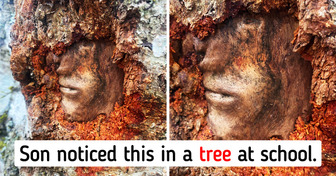20 Pictures That Capture the Adventures Almost Every Mom Has to Deal With Every Day

The arrival of a child can change the lives of everyone in a household. They are beautiful creatures that brighten our life, but their presence can also fill us with some doubts and fears. Knowing how their body works and knowing what to expect at each stage of their development (pediatric specialists can be of great help in this) can help us experience their first months in a better way. We know some things about them from friends or grandparents, but others never cease to surprise us, even if it is not the first child we are carrying in our arms.
Bright Side investigated some little-known facts about newborn babies that we think might help their caregivers better understand them (some of which may surprise you).
If parents or caregivers begin to notice that their baby begins to lose their hair during the first 6 months after birth, they should not worry. According to the American Academy of Pediatrics, it is normal for this to occur during this period. The process may be linked to natural hormonal changes and to the friction caused by the baby lying on its back — remember that this is the most common position for babies and, besides, this is how they should sleep.
According to specialists, new hair will grow between 6 and 12 months later. By then, the little one will have “renewed” hair that can even look a little different than what you first saw when they were born. It goes without saying that if you have any doubts about your child’s hair growth or if you notice anything strange, like excessive redness or flaking, you should consult your pediatrician.
When babies are newborns, it is common for them to sneeze frequently. It is not known exactly how many times a day they will do it, but you can tell they do it a lot. Don’t worry, this is something that is healthy — it is a reflex for the little one that allows them to clean their nostrils and protect themselves from germs.
Now, if in addition to sneezing they present some of these symptoms: difficulty breathing, fever, lack of appetite or no appetite, nasal secretions, or cough, you should take them to see their pediatrician.
Yes, although their bodies are obviously much smaller than ours, babies have approximately 300 bones, and adults have 206. What happens is that children’s bones are soft and flexible (made of a material called cartilage) and, during growth, some of them fuse together and with the help of calcium, shape the skeleton of an adult. This process can be completed by the age of 18 for women and 21 for men.
While an adult takes between 12 and 20 breaths per minute, a newborn may take between 30 and 60 breaths per minute. When sleeping, this becomes a little slower, about 30 to 40 breaths every 60 seconds. As they get older, their breathing will slow down.
But what may amaze their caregivers the most is that they may pause or stop breathing for less than 10 seconds. Parents need not be alarmed but should ask their doctor for an explanation of their little one’s breathing patterns and signs of what could be a problem, like difficulty inhaling and exhaling, dilated nostrils, or when breathing stops for more than 20 seconds, among others.
Of course, each baby is unique and not all are born weighing the same, but specialists suggest that a healthy baby can weigh between 5.5 and 10 lbs at birth. What could be strange for parents, especially first-time parents, is that later on, instead of gaining weight, they lose weight. But there is no need to worry, it is normal for them to lose between 7% and 10% of their body weight during their first few days of life. Then they will start to gain weight around 2 weeks or so after birth.
When seeing their newborn smile, many parents may think that they are responsible for generating this gesture of happiness in their baby. We do not want to disappoint them, but the first smiles that are perceived in the little ones are reflexes that can be motivated by internal stimuli like gas.
The so-called first “social smile,” the one that is intentional and that the child makes to interact with their parents and other people, occurs at the end of the second month, approximately. So don’t forget to consult your pediatrician about this event to be attentive to the beginning of one of the most beautiful forms of communication you will experience.
While grandparents, aunts, uncles, and fathers like to engage in long discussions claiming that the newborn “has eyes like mine,” nature has other plans. The definitive color of the eyes that the little one will have will not be known until, at least, the first year of age.
You may have heard that melanin regulates the color of our skin. However, a lesser-known fact is that depending on the amount of melanin secreted during the first year after birth, your eye color can change. If your body produces a small amount, your eyes will be blue. If you produce a bit more they will be green or hazel. With larger amounts you’ll have brown eyes — which is, by far, the most common color.
Newborns have a very well-developed sense of smell and they can absolutely recognize their mother’s smell. Not only that, when they are breastfed, they will soon recognize the smell of their mother’s milk and differentiate it from that of other mothers. As it turns out, a baby’s sense of smell acts like a “radar” that helps them get their nutritious food.
According to a study conducted by Finnish researchers in 2013, babies can recognize the music they heard in their mother’s womb for a few months after birth. In addition to this curious fact, some specialists invite mothers to listen to music occasionally during the third trimester of pregnancy because it can be a positive stimulus for the baby’s brain.
They recommend that it be soft and relaxing, like classical music or lullabies, or some other music that relaxes and makes mom happy. It is advisable to avoid: high volume, placing headphones on the belly, and noisy places.
Babies have characteristics like their look, their smell, their smile, their cheeks, their skin, and the list goes on that arouse tenderness in most of us. In a study conducted in 2016 by researchers at Oxford University, it was found that the little ones are “designed” like this as part of a survival mechanism since these things that make them adorable have the objective of awakening the caring instinct of adults to provide them with the protection that they alone cannot yet give themselves.
Remember that the information provided in this article is for informational purposes only — you should always clarify any doubts you may have about your baby’s health with your trusted physician.
Whether you are a new or experienced parent, we would like to know which of these facts you didn’t know and were most surprised by. Are there any others that you know and think you can surprise us with?
Subscribe to our podcast on Spotify or Apple podcasts to enjoy our best stories and give a real treat to your ears.











